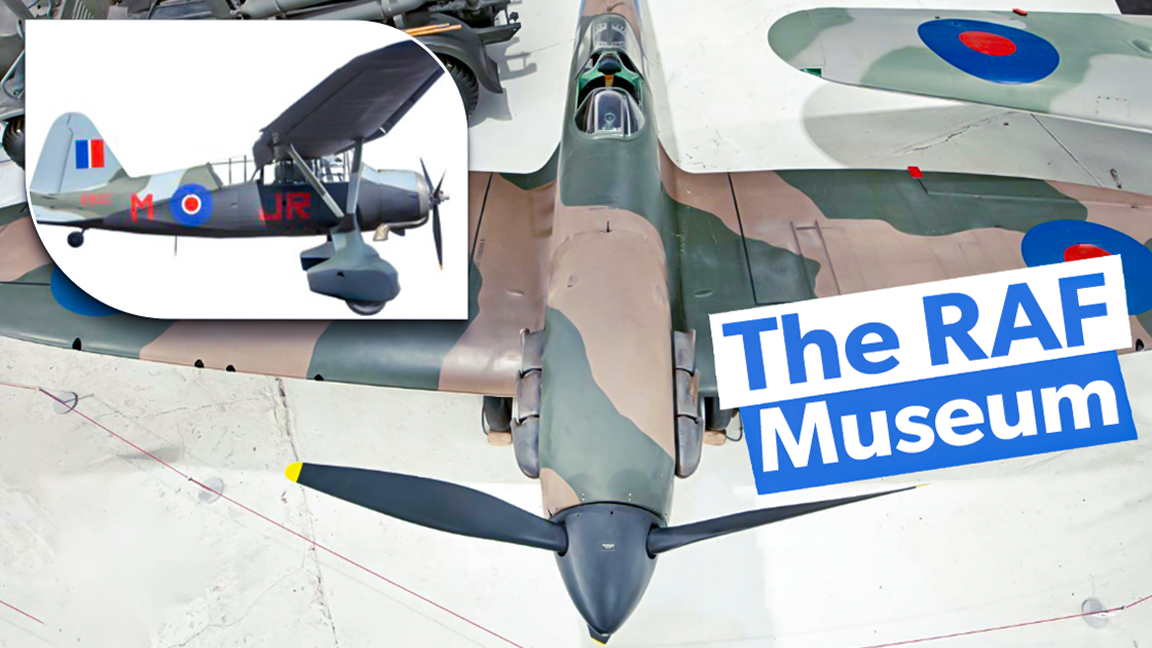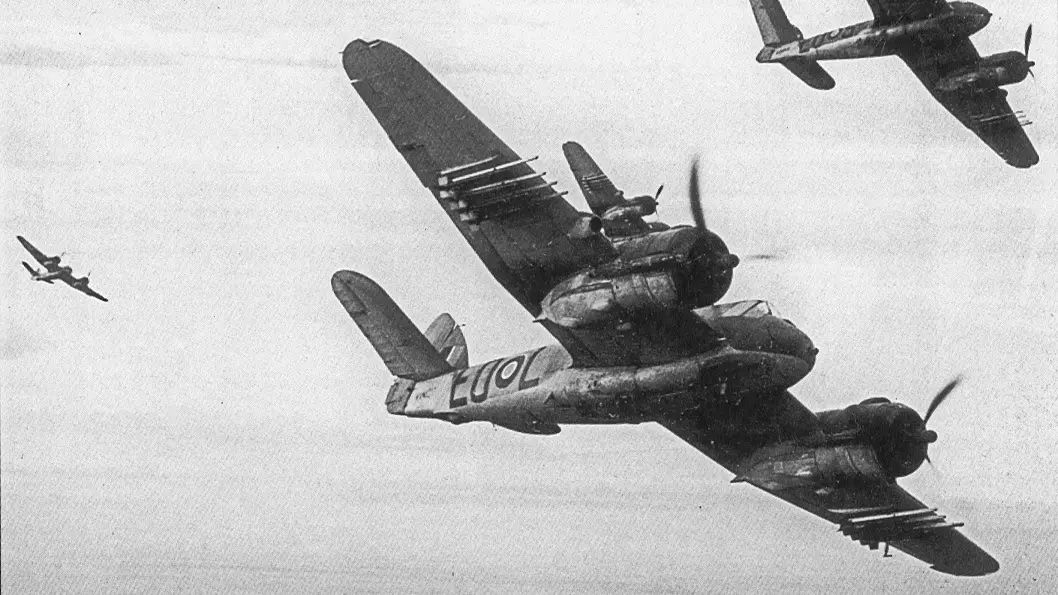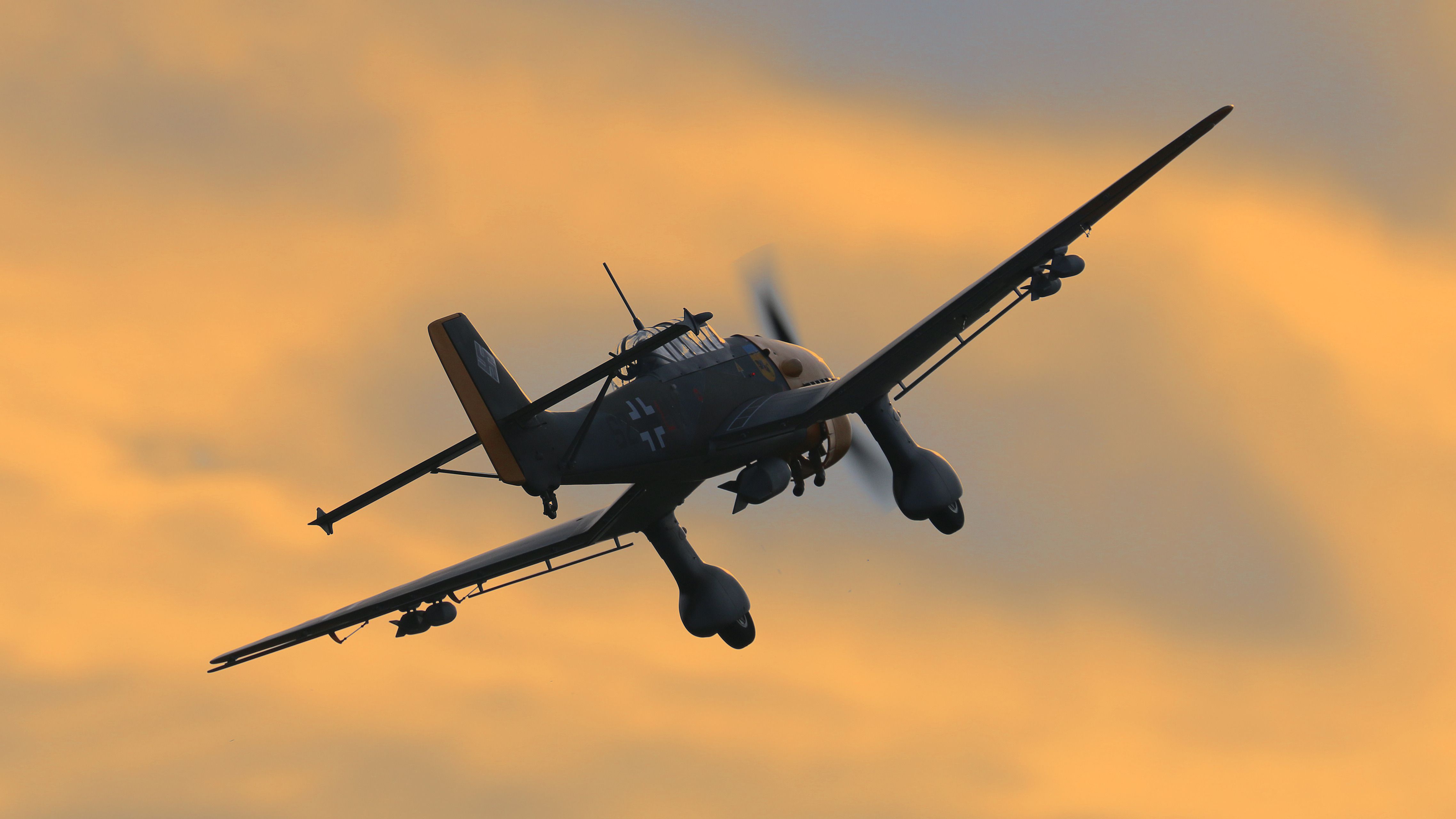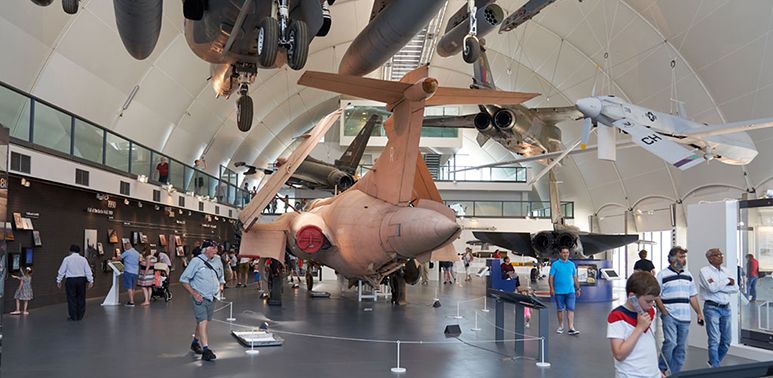The Royal Air Force (RAF) Museum celebrates the historic era when some of the world’s most iconic military aircraft took to the skies. Now, several years after World War II (WWII), many aircraft call one of the museum’s two sites home, as the spaces preserve their life and legacy. From the Avro Lancaster to the Hawker Hurricane and the Boeing B17 to the Stuka Ju87, the museum collectively shares numerous stories from the missions the aircraft served throughout the six-year war. While the museum cherishes the military aircraft as a whole, it commemorates the story of the RAF, which was formed more than a century ago.
With locations near Cosford and London, the museum welcomes thousands of annual visitors and continues to evolve. Three new innovative galleries that explore the first 100 years of RAF. They also highlight how the Air Force has transformed into what it is today, and focuses on what the future looks like with its contributions and technology. The remainder of the site houses award-winning galleries containing military aircraft that served in both World War I and WWII.
Several historical aircraft
The London site also has six hangars that are full of exhibits:
- Hangar 1 is the museum’s main entrance. It contains stories, objects, films, and games that highlight how the RAF delivered missions from 1918 to 2018. The hangar also has the “RAF – First to the Future” exhibit, which explores the stories of the people, equipment, partnerships, and innovations that keep the RAF a leading agency within the industry.
- Hangar 2 highlights the earliest days of flight and the years of WWI, including the formation of the RAF in 1918.
- Hangars 3, 4, and 5 contain aircraft and stories of the Battle of Britain during WWII. With extraordinary bombers, seaplanes, trainers, and helicopters, the hangar also has two permanent exhibitions offering more insight into the history of the RAF during the war.
- Hangar 6 focuses on the age of uncertainty. Visitors can hear from RAF personnel who have served during modern times to learn about how the agency has adapted its strategy and technology to protect the United Kingdom around the clock.
According to the museum, there are nearly 30 aircraft that have ties to WWII. The Avro Lancaster, among the most popular, was dispatched on more than 130 missions, more than any other allied bomber. Most Lancasters, however, did not survive more than around 25 missions, as they were used during the Dambusters Raid in 1943.
“The Flying Fortress” and the “Whispering Death”
The B17, also known as the “Flying Fortress” is an American daylight bomber. It bears its nickname because the aircraft was heavily armed, allowing it to sustain severe damage while inflicting the same amount of force. Although it was the primary bomber of the United States, around 850 B17s flew over Europe during the daytime hours while the RAF Bomber Command flew at night.
Another fighter aircraft with a nickname was the Bristol Beaufighter. Also known as the “Whispering Death,” the plane developed a reputation for being difficult to fly when it was introduced into service. Early stories recall pilots watching a Beaufighter fly from afar as it performed show-stopping aerobatics. When the plane landed, they discovered the pilot was a female, which shocked the pilots. After that, they did not seem to have an issue flying the fighter aircraft.
Photo: BAE Systems
The two-engined Bristol Blenheim was a light bomber primarily used for daylight bombing missions in 1940, while the Consolidated B24 Liberator differed with four engines. Supplied to the RAF, the bomber served in the Far East during the final years of WWII. Following the war, it was transferred to the Indian Air Force, which subsequently presented it to the RAF Museum after it was retired.
Photo: Graham Ashby | Shutterstock
Here are other notable WWII fighter aircraft at the RAF Museum.
|
WWII Fighter Aircraft At RAF Museum |
|
|---|---|
|
Aircraft |
About |
|
Curtiss Kittyhawk |
An American-made airplane with an iconic paint scheme featuring a shark’s mouth, illustrating a scary look. |
|
De Havilland Mosquito |
The plane was nicknamed “The Wooden Wonder.” It was made of wood and designed as an unarmed bomber that relied on superior speed to escape enemy fighters. |
|
Fairey Battle |
A fighter aircraft known to be overweight and underpowered. It crashed in Iceland during the war and was later found in the 1970s. |
|
Fiat Falco |
The aircraft was flown to the RAF by Sergente Pilota Pietro Salvadori, who made an emergency landing on a Suffolk beach. |
|
Focke Wulf Fw190 |
A very powerful fighter aircraft that outperformed some contenders. |
|
Handley Page Halifax |
The aircraft was lost during its first mission to attack the Tirpitz. It was discovered in a Norwegian fjord. It was subsequently hit by enemy fire and crashed into a frozen lake. Aircraft remains were recovered about three decades later. |
|
Hawker Hurricane |
A British-made single-seater aircraft that was known to play a significant role during the Battle of Britain. |
|
Hawker Tempest |
Another single-seater fighter aircraft that used drop tanks. It had incredible range, with the ability to travel as far as 1,640 miles in one trip. |
|
Junkers Ju87 |
Known by most as the “Stuka,” it was one of the most feared aircraft during the war, emitting a terrifying siren sound. |
Visiting the museum
The RAF Museum is open daily at 10:00, and entry is free. However, the museum warns that it regularly undergoes maintenance and conservation, meaning some exhibits or hangars may be temporarily closed.
Photo: RAF Museum
Visitors wishing to see something specific are encouraged to contact the museum in advance to ensure that it is on display and available to the viewing public.




